Inside L.A.’s new dance space: the Glorya Kaufman Performing Arts Center
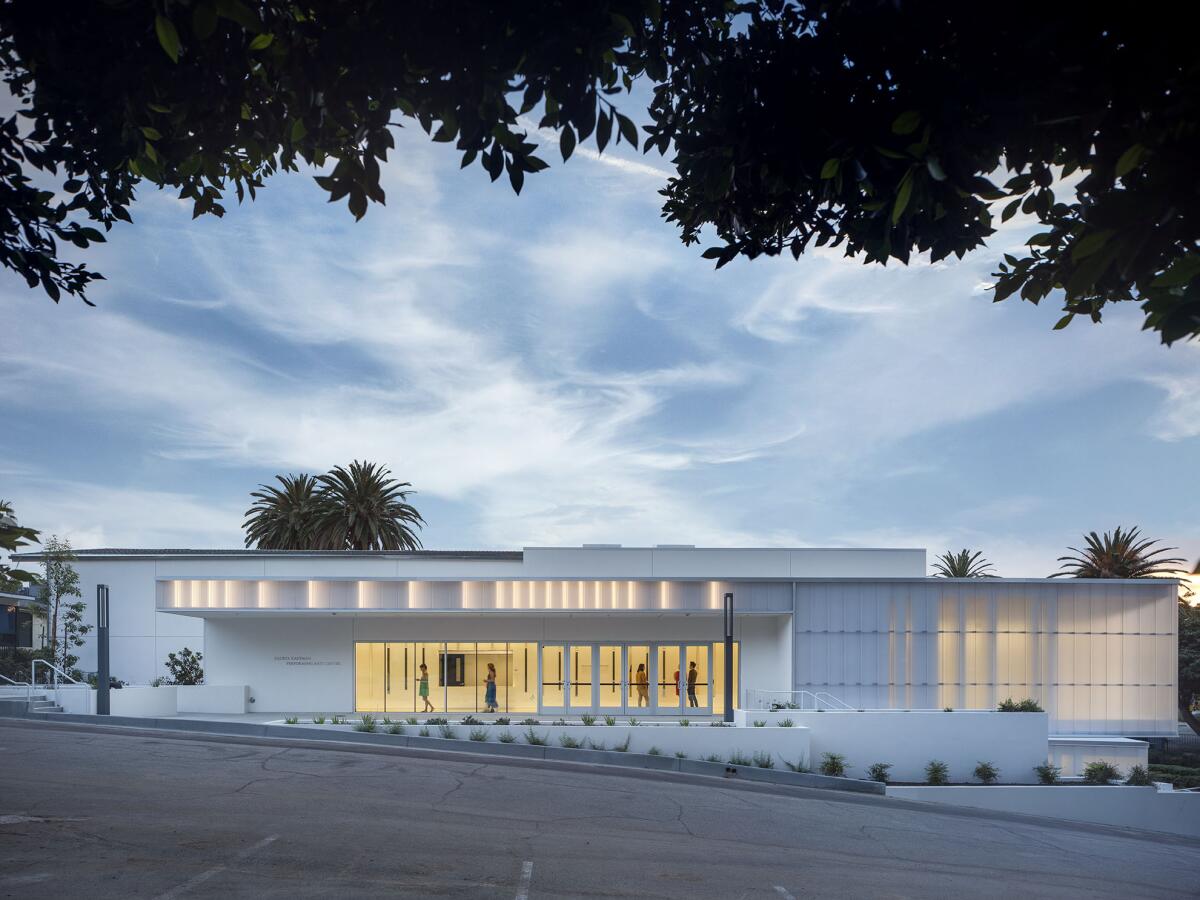
- Share via
It is unseasonably warm and the Super Bowl is about to turn a vast swath of L.A. into an impenetrable fortress, but I’m obsessing over the wasabi fries at Far Bar in Little Tokyo and the stylish ruanas worn by the Colombian Olympic team in Beijing. I’m Carolina A. Miranda, arts and urban design columnist at the Los Angeles Times, and I’m here with all the essential culture news:
Dance theater
Los Angeles has some terrific performing arts venues: There is the curvilinear intimacy of the Music Center’s Mark Taper Auditorium, with its thrust stage surrounded by 700-plus seats, the 500-seat Bram Goldsmith Theater at the Wallis in Beverly Hills, whose thoughtfully stacked seating tiers make it possible for a shorty like me to see over people’s heads, and the similarly scaled 538-seat auditorium of the Broad Stage in Santa Monica.
Fewer in number are more intimately scaled performance venues that are geared primarily for dance. Enter the new 300-seat Glorya Kaufman Performing Arts Center, on the campus of Vista del Mar Child and Family Services in Cheviot Hills.

The project’s design was conceived by AUX Architecture, led by the firm’s founding partner, Brian Wickersham. The firm’s team took a rather drab 1950s Modernist structure that was used for Jewish religious services and as a gathering space for Vista Del Mar’s clients and residents, and reimagined and expanded it into a 10,550-square-foot theater and rehearsal space.
This includes a contemporary redo of the building’s silhouette, replacing the structure’s pitched-roof profile with a pair of horizontal geometric volumes that rest one atop the other. Instead of stucco, much of the building is now wrapped in translucent polycarbonate panels that allow the sun to drench some of the interior areas in light during the day and give the building a warm glow at night — effectively transforming it into a lantern. The northern facade now bears an irregular pattern of windows that gives the ground floor a dynamic feel. (The pattern was inspired by Martha Graham’s “Lamentation,” with its positions of compression and expansion.)
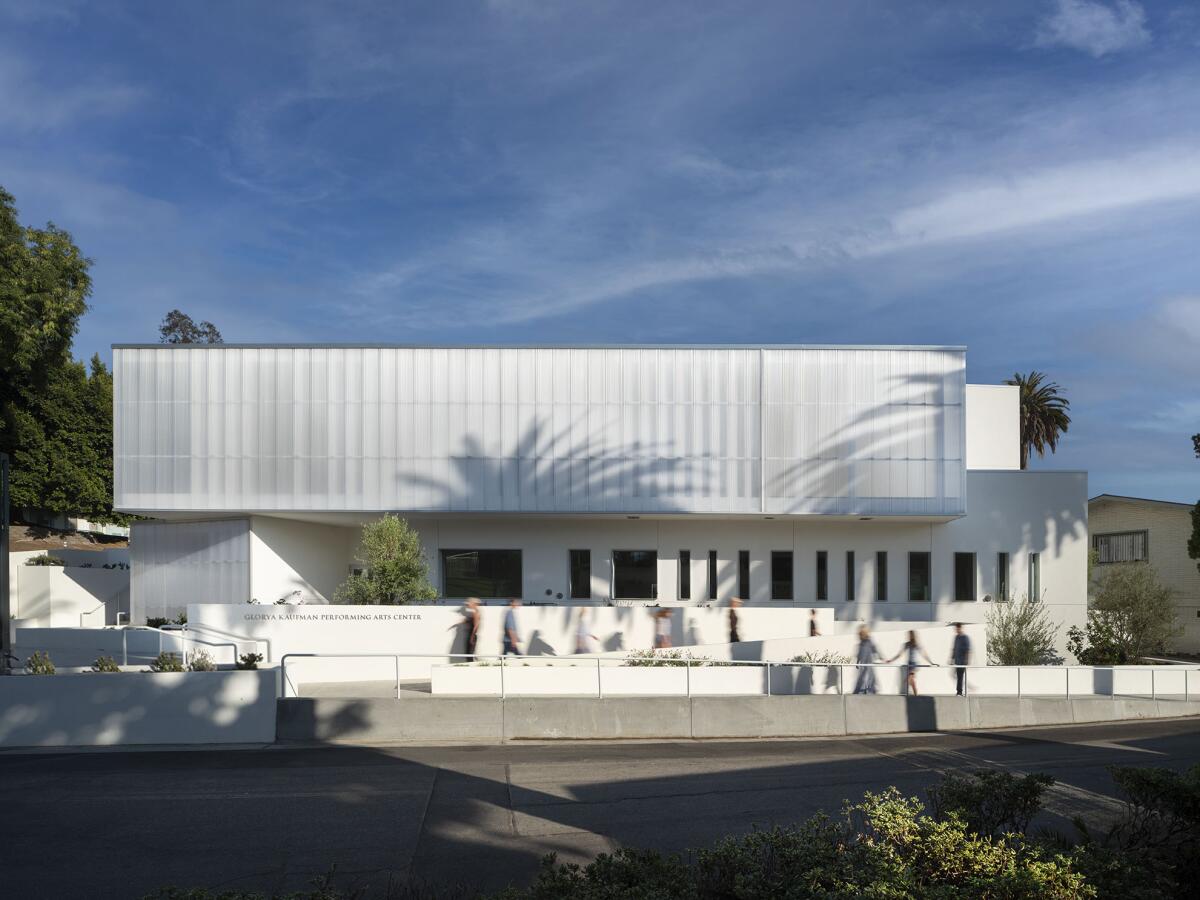
But perhaps most remarkable are the thoughtfully designed spaces the public isn’t always liable to see: a green room area just off the stage that is bathed in light and a comfortable rehearsal and classroom space that works to bring the outdoors in. Also worth a nod: the bright red and yellow tile in the restrooms. (I appreciate a design that can turn a bathroom into a pleasing experience of color and geometry.)
The building, which was completed last year, is intriguing for the ways in which it reimagined an average-looking structure on a difficult site — it inhabits a relatively steep grade — into something that feels open and beckoning. “It was about taking this square footage,” says Wickersham, “and creating something felt totally new.”
Most intriguing will be the building’s purpose.
Make the most of L.A.
Get our guide to events and happenings in the SoCal arts scene. In your inbox every Monday and Friday morning.
You may occasionally receive promotional content from the Los Angeles Times.
Vista Del Mar provides a range of educational, counseling and mental health services for minors who live both on and off the site. The idea for the new Kaufman center (funded by one L.A.’s most dedicated dance patrons) is to create a space that will serve Vista’s clients as much as it will the larger dance community. The building will, of course, be used for movement classes and other events for members of Vista’s community. (The day I toured the building, a teacher was leading a group of teens through some steps set to blazing bachata grooves.)
It will also be rented to outside dance companies and other cultural organizations for rehearsals and performances. The goal is cross-pollination, says the center’s artistic director Sara Silkin (who is also a dancer). In addition to simply employing the venue as a location, a visiting dance troupe might lead a workshop for Vista residents, or allow the kids to participate in rehearsals, then see the finished work — a way for them to visualize and be exposed to working professionals in the arts.
The venue will also serve an important purpose in the dance community. “It’s an important steppingstone for small dance companies,” says Silkin. “Before a booking agent will book you in the bigger venues, you have to sell out smaller stages.”
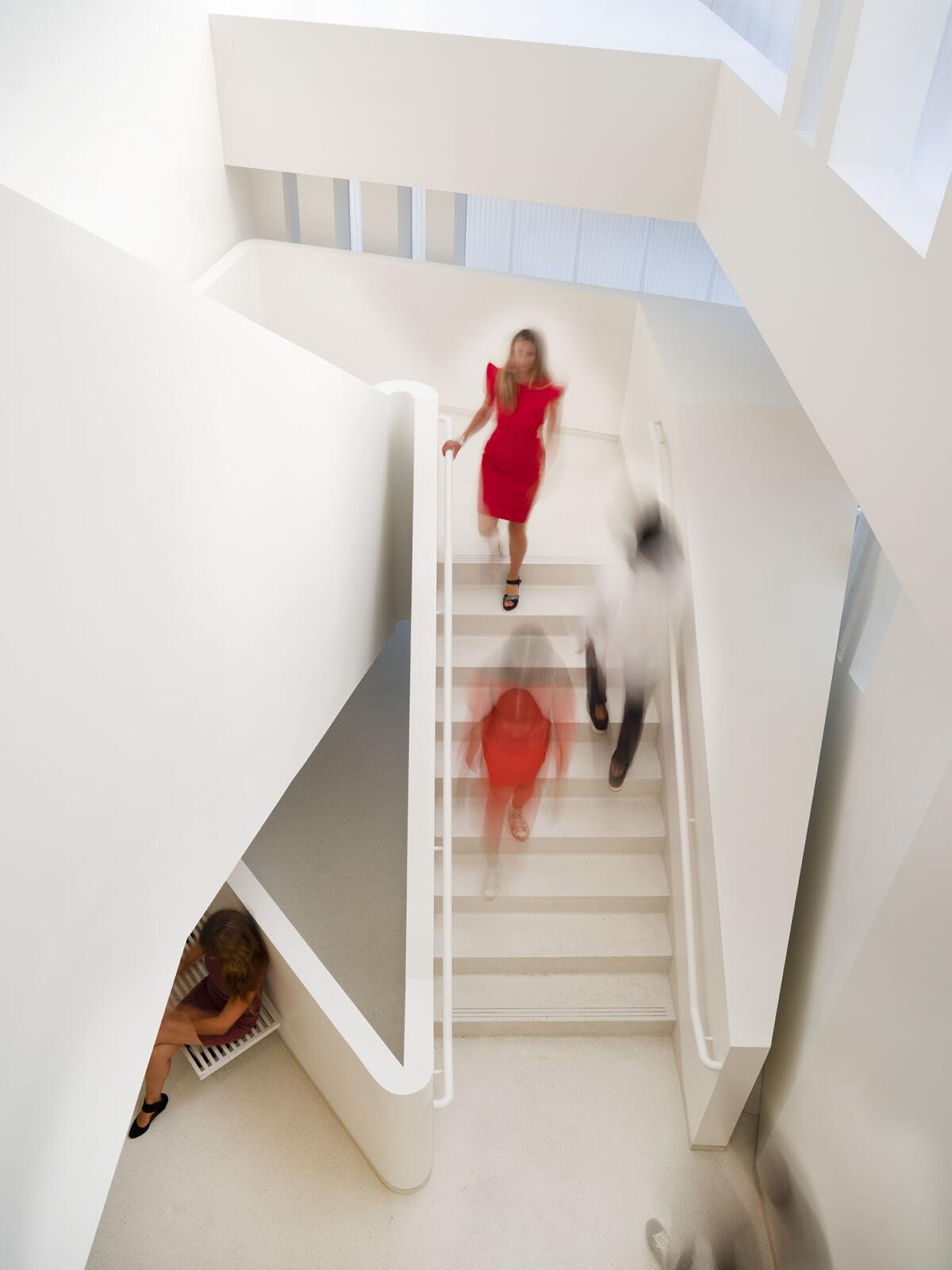
COVID-19 has delayed an official opening, but the hope is that if Omicron continues to subside, the Glorya Kaufman Center could soon be hosting its first public dance performances. In the meantime, the kids at Vista Del Mar are giving the building a vigorous workout.
Friday night lights
There’s a football game happening in Inglewood this week between a team named for cats and the other for sheep. I hear that it will be very big. Super, in fact.
Let’s start with the good news around Super Bowl LVI — not to be confused with the Oscars (the Super Bowl of acting) or Frieze (the Super Bowl of arty merch).
Enjoying this newsletter? Consider subscribing to the Los Angeles Times
Your support helps us deliver the news that matters most. Become a subscriber.
Times culture writer Jessica Gelt reports on how L.A.’s Inner City Youth Orchestra ended up on the performance slate for the “NFL Honors” program, which was broadcast live Thursday night on ABC. “There are many youth orchestras,” says founder Charles Dickerson, “but ours is the only one that lives and breathes in the heart of a Black community in the United States.”
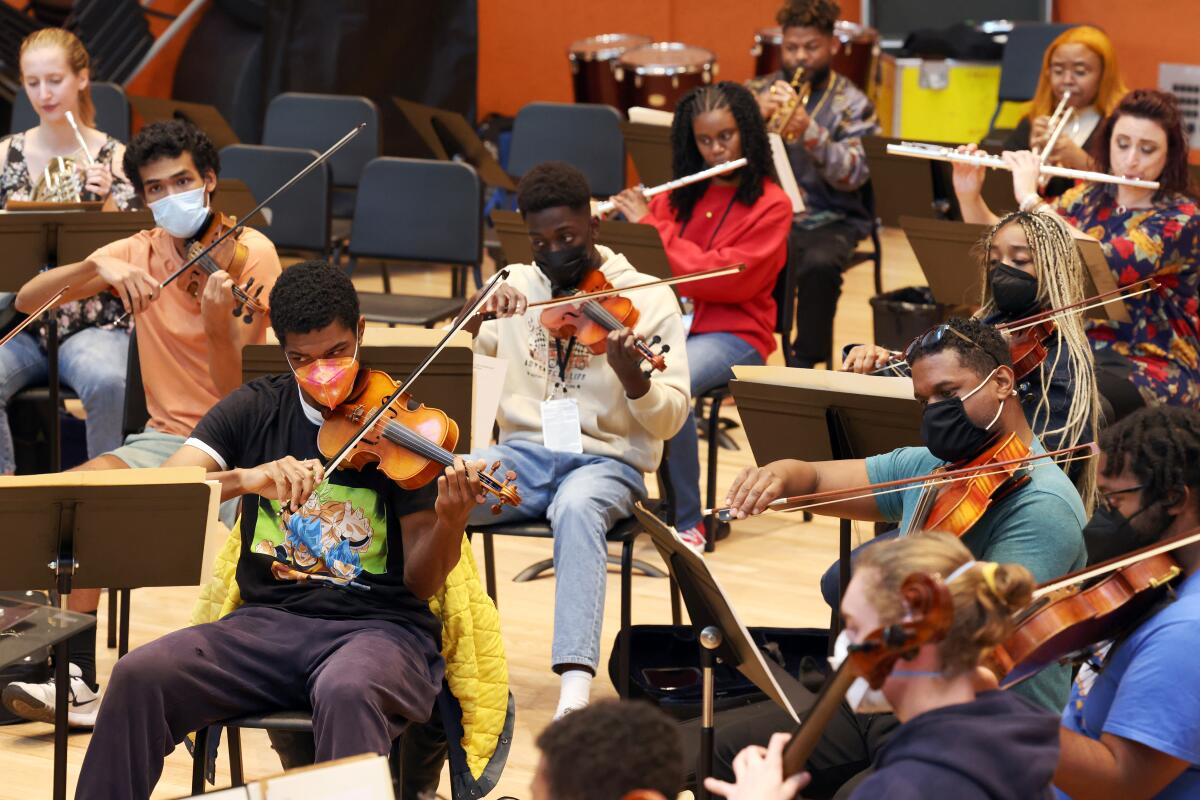
I have been on the SoFi Stadium design beat over the last few weeks and have made many visits to the site, including a pilgrimage to an IRL Rams-49ers game in early January to get a sense of how this behemoth $5-billion stadium works. Most hopeless job at SoFi? The folks who have to hold up signs asking spectators to wear their masks.
The good news: The stadium’s innovative, indoor-outdoor architectural design, which takes full advantage of the views all around, makes it a pretty incredible place to be — with cheap seats that make the most of the SoCal landscape. Leading the architectural team was Lance Evans at HKS, which has also designed stadiums for the Dallas Cowboys and the Minnesota Vikings. As I write in my review of the building, “This is a stadium that looks out as much as it looks in. And you don’t have to be a VIP to experience it.”
One of the stadium’s most well-executed elements is the landscape design, which comes courtesy of the team at Studio-MLA. I profile the firm’s founder, Salvadoran-born designer Mia Lehrer, who over the decades has consistently chipped away at L.A.’s love of concrete — transforming parking lots and brownfield sites into wild gardens. At SoFi, she and associate principal Kush Parekh have turned what could have been “a blistering expanse of concrete into something that is much more pastoral.”
Formative to her work at SoFi? Her decades of labor rethinking the L.A. River.
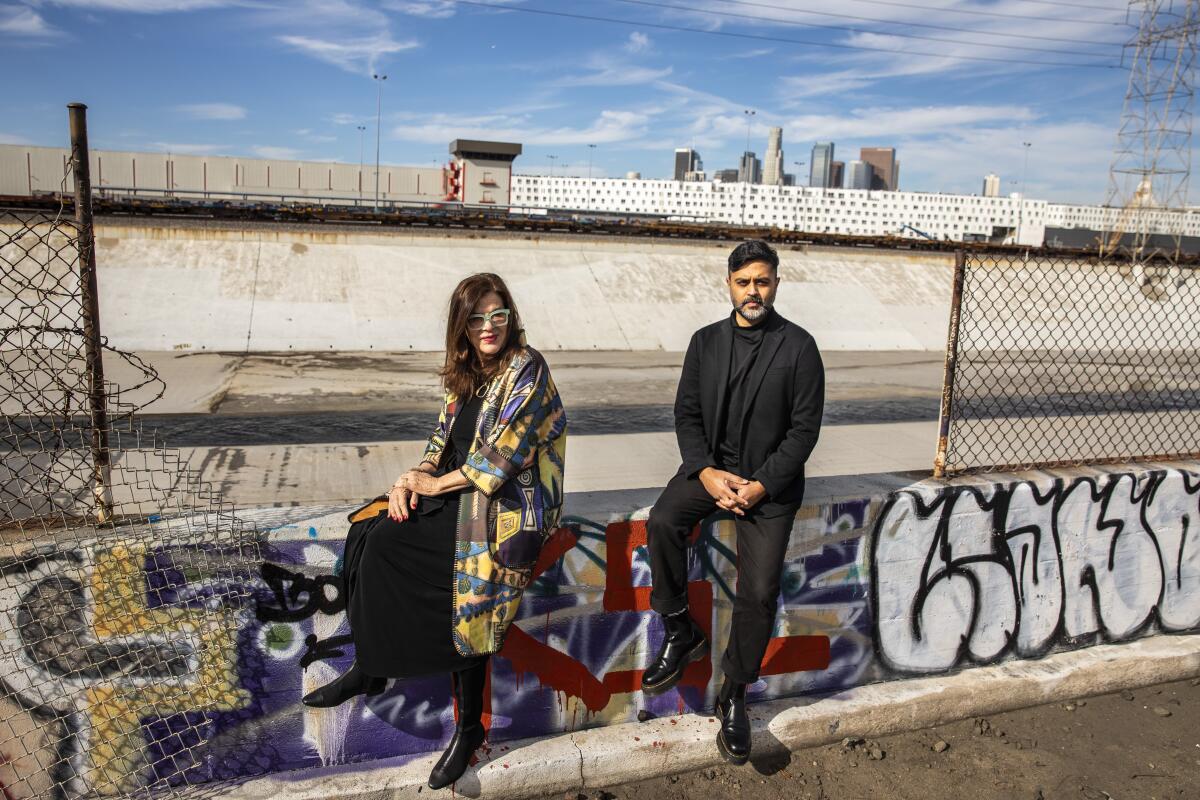
Plus, my guide to the five best best places, architecturally speaking, at SoFi.
And our food team’s guide to the best places to drink around the stadium, as well as the best places to eat — with a contribution by my food-conscious editor Laurie Ochoa! Because let’s face it — this is the only type of Super Bowl outing most of us are going to be able to afford.
Bonus: Football stadium design is an intersection of the industrial, the fantastical and the bizarre. My colleague Chuck Shilken gathers the designs of L.A. football stadiums that never happened. That Mission Revival extravaganza known as the Carson Hacienda is ... 👀
Not so Super?
Because we are reporters, The Times’ team has been picking through the fine print. Late last month, Jessica Gelt reported that the Super Bowl’s extravagant halftime show produced by Roc Nation would feature a field cast consisting of hundreds of unpaid performers. At the time, the show’s choreographer, Fatima Robinson, said the field cast was meant to represent concertgoers, “to fill up the space,” and that the only qualification was that they be able to “walk and chew gum.”

But in a follow-up report, Gelt revealed that at last year’s Super Bowl, the field cast performed alongside professional dancers — an inequitable two-tier structure in which some were paid union rates while others went unremunerated.
This week, Gelt reported that the halftime show had agreed to pay the performers a minimum-wage rate of $15 an hour. It’s an improvement, but dancer and activist Taja Riley says any performer in one of the costliest extravaganzas of the year should be earning a professional rate. Her suggestion: “Abide by SAG-AFTRA protocols.”
Meanwhile, I’ve been digging into SoFi Stadium’s art program, which is incomplete. Work is still being installed, but “with the Super Bowl upon us, in a stadium that sits at the heart of a city indelibly linked to Black culture in the 20th century, there are no completed works by a Black artist.” In limbo are a pair of large-scale installations by L.A.-born-and-raised sculptor Maren Hassinger and Afro-Cuban artist Alexandre Arrechea. Also missing in action is Albert Stewart‘s 1950s historic sculpture of the Derby-winning thoroughbred Swaps.
Why is this happening? Well, a good deal of it has to do with the squishy development contract that the city of Inglewood signed with the stadium’s developer.
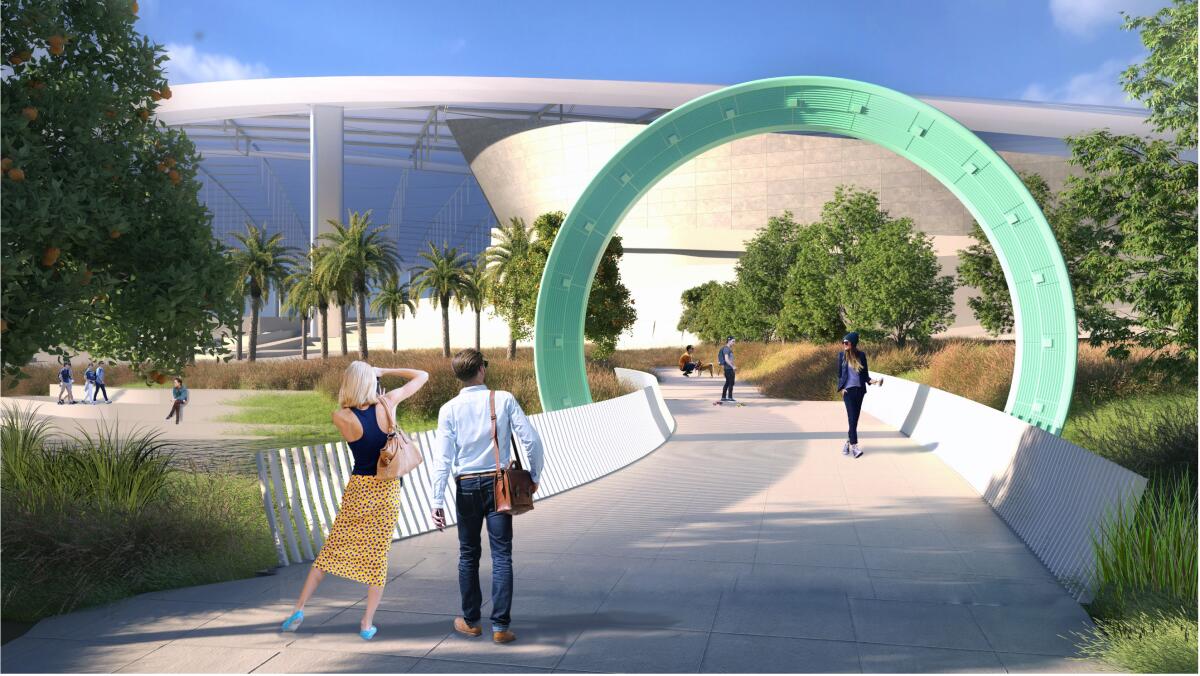
Oh, and go figure: SoFi Stadium has sent Inglewood rents skyrocketing. And, as Grist reports, some of the developer’s urban initiatives haven’t worked out quite as promised.
On and off the stage
In non-Super Bowl news: Times theater critic Charles McNulty reviews Mike Lew’s “Teenage Dick” at the Pasadena Playhouse, a work inspired by Shakespeare’s “Richard III” that tackles disability in a high school setting. The play’s most daring move, writes McNulty, isn’t casting an actor with cerebral palsy as “a surrogate for Shakespeare’s hunchback tyrant who hacks his way to the throne.” Instead, “the most audacious aspect of this dark comedy ... is that it allows this adolescent character who’s mocked for his disability to be as dastardly as he desires.”
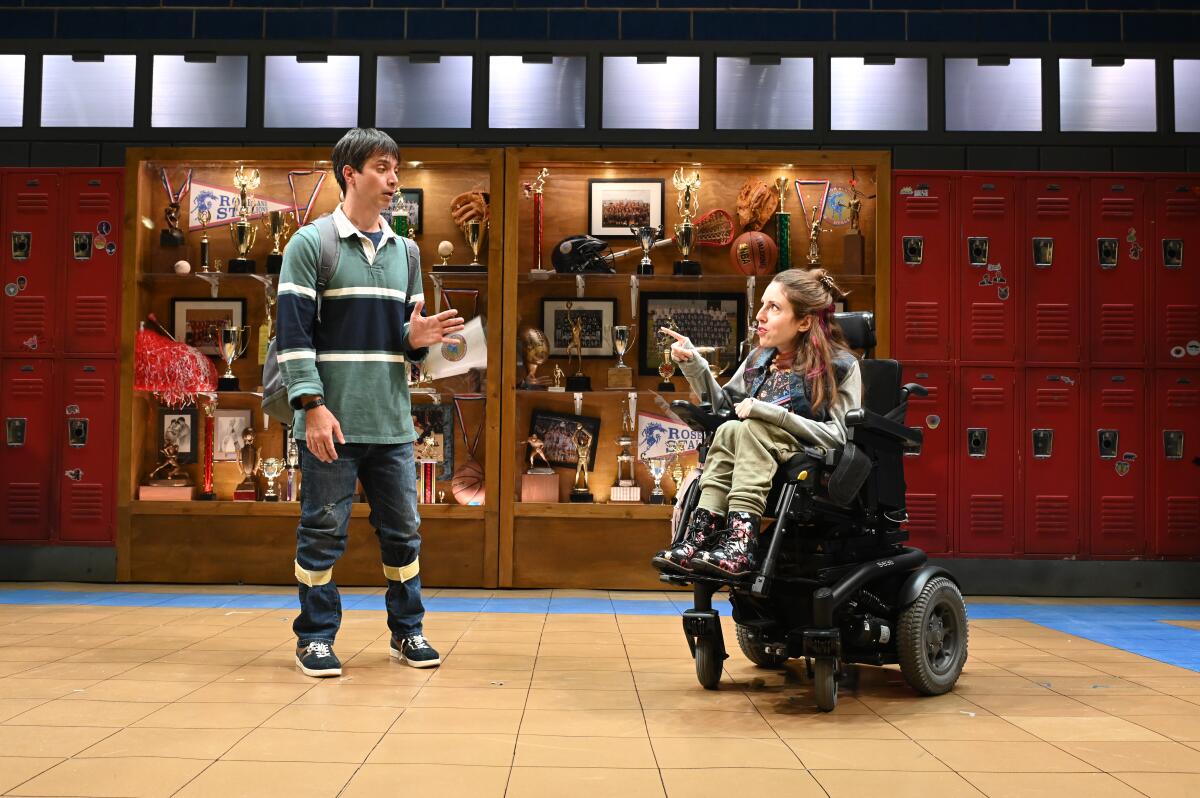
Classical notes
Composer George Crumb, known for pushing instrumentation to its limits, and for experimental works such as the haunting 1970 composition “Ancient Voices of Children,” died last Sunday at the age of 92. Times classical music critic Mark Swed penned an appreciation for Crumb: “He embraced multiple sides of our contradictory national character through music ethereal yet startling, otherworldly yet stylistically wide-ranging, mysteriously impenetrable yet politically uncompromising, darkly death-obsessed yet marvelously life-affirming.”
The Huntington Library’s relatively new Chinese Garden will be hosting a work of opera: “On Gold Mountain,” based on Lisa See’s bestselling book about her Chinese American family’s experiences in the U.S. See tells Jessica Gelt that the location is very meaningful: “After all, Henry Huntington, as a railroad and real estate businessman in the late 19th and early 20th century, had a complicated history with the Chinese.”
Kris Bowers, the pianist and composer behind scores for “King Richard” and the Netflix series “Bridgerton” has become a go-to composer for the film industry. Last November, his music was performed by the L.A. Phil. “I feel like any time people are emotionally moved,” he tells contributor Tim Greiving, “then it was successful on some level.”
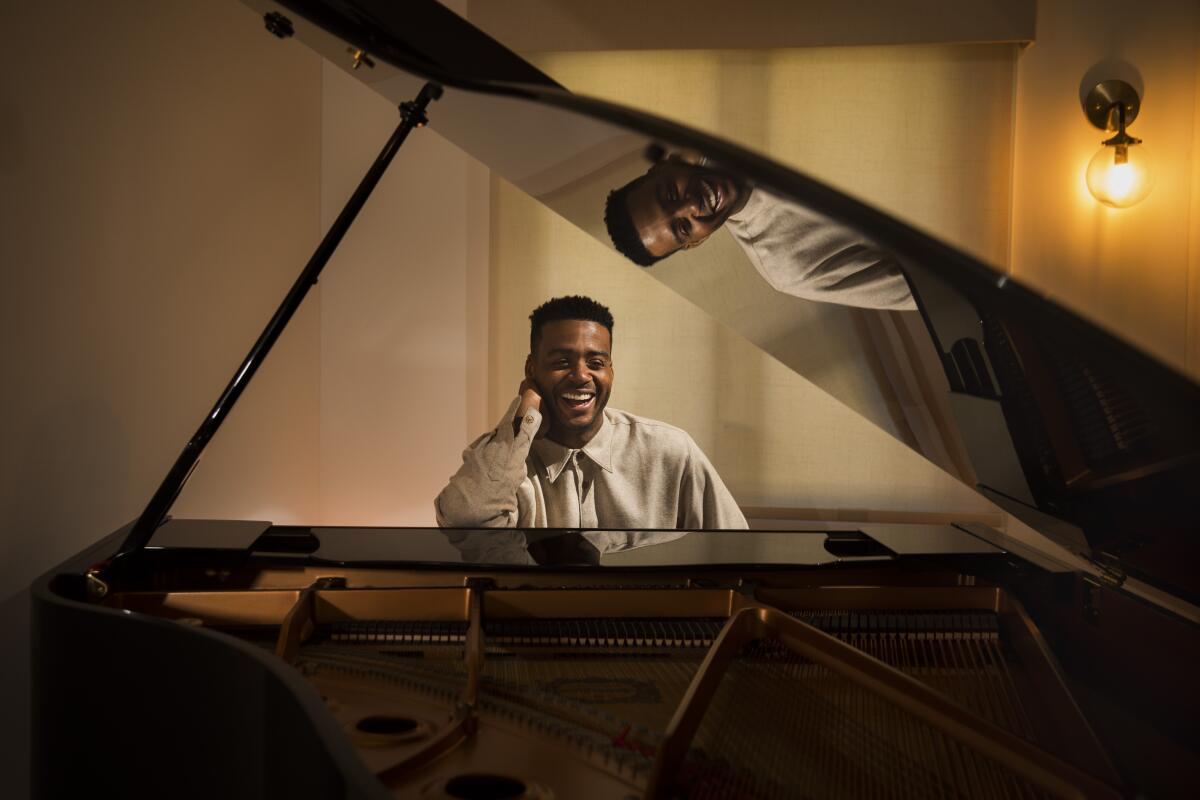
Visual arts
The New York Times’ Jori Finkel has a report on how Cameron Shaw is steering L.A.’s California African American Museum amid a pandemic and a sexual harassment lawsuit that led to the quiet resignation of director George Davis. Among the coming initiatives: a new five-year partnership with Mark Bradford’s Art+Practice.
Times art critic Christopher Knight has been doing the gallery thing. In fact, last week he hit a dozen of them — covering works by the late British painter Leon Kossoff at L.A. Louver, as well as Ed Templeton’s “closely observed” paintings, drawings and photographs at Roberts Projects and Samara Golden’s illusionistic installation at Night Gallery, an “indoor skyscraper” that becomes “a convulsive landscape of psychic disorder, ruin piled atop chaos.”

Plus, Frieze is rolling into town next week — the Super Bowl of air kissing! But if you’re jonesing for art right now, the galleries are open, and they don’t charge admission. Deborah Vankin has an essential guide on how to see 10 artists who will be featured at the fair in art spaces around L.A., including L.A. Louver, Luis De Jesus Los Angeles and Château Shatto. Plus, to keep things interesting, she throws a couple of museums into the mix.
Essential happenings
We’ve got Esa-Pekka Salonen and the L.A. Phil. We’ve got the musical “Wicked” on stage in the O.C. We’ve got theatrical lucha libre courtesy of Lucha VaVoom. Times listings guru Matt Cooper rounds up all the best happenings that have absolutely nothing to do with football.

Passages
Richard Christiansen, an influential Chicago theater critic who for decades served as critic at the Chicago Tribune and championed the work of figures such as David Mamet, Gary Sinise, Amy Morton and Brian Dennehy, is dead at 90.
John Wesley, a painter of cartoonish figures whose work seemed extruded from a surreal American subconscious has died at 93.
In other news
— Where surveillance, labor and the performing arts intersect: that ick phenomenon known as the Amazon Ring dance.
— Brad Pitt’s Make It Right Foundation built 109 homes in New Orleans in the wake of Hurricane Katrina. A comprehensive report by geographer Judith Keller shows that the vast majority of the units are riddled with construction-related problems, six are boarded up, and two have been demolished.
— How Korean pop culture became a global force.
— Oscars season officially kicked off this week with the announcement of the nominees! Here’s the full list. Do we care? Let me put it this way: I’ll be tuning in to check out the awards’ set design.
— The Guardian’s Charlotte Higgins on the impasse over returning the Elgin marbles to Greece: “The sculptures, though more ancient than either concept, are embroiled in the history of the nation state and of museums, and tangled in a knot of legal trusteeship and ownership.”
— An arbitrator has ordered Harper Lee’s estate to pay $2.5 million in a dispute over the production of plays inspired by “To Kill a Mockingbird.”
— Baltimore Museum of Art director Christopher Bedford will take over as director at SFMOMA.
— The Dallas Museum of Art is planning an expansion — raising the question, as Mark Lamster writes, for whom, exactly, is this expansion intended?
— A nuanced piece of criticism from New York Times TV critic James Poniewozik on the case of Bill Cosby and separating art from the artist.
— Why did Pancho Villa raid a New Mexican village in 1916? Among the rumors: He was seeking revenge (for unknown reasons) against a merchant named Sam Ravel. In a documentary and a story for Smithsonian Magazine, one of his granddaughters, L.A.-based Stacey Ravel Abarbanel, investigates.
And last but not least ...
From the annals of artistic defacement: The case of the “bored” security guard who drew eyes on the blank faces of a painting by Anna Leporskaya at Russia’s Yeltsin Center.
The biggest entertainment stories
Get our big stories about Hollywood, film, television, music, arts, culture and more right in your inbox as soon as they publish.
You may occasionally receive promotional content from the Los Angeles Times.




